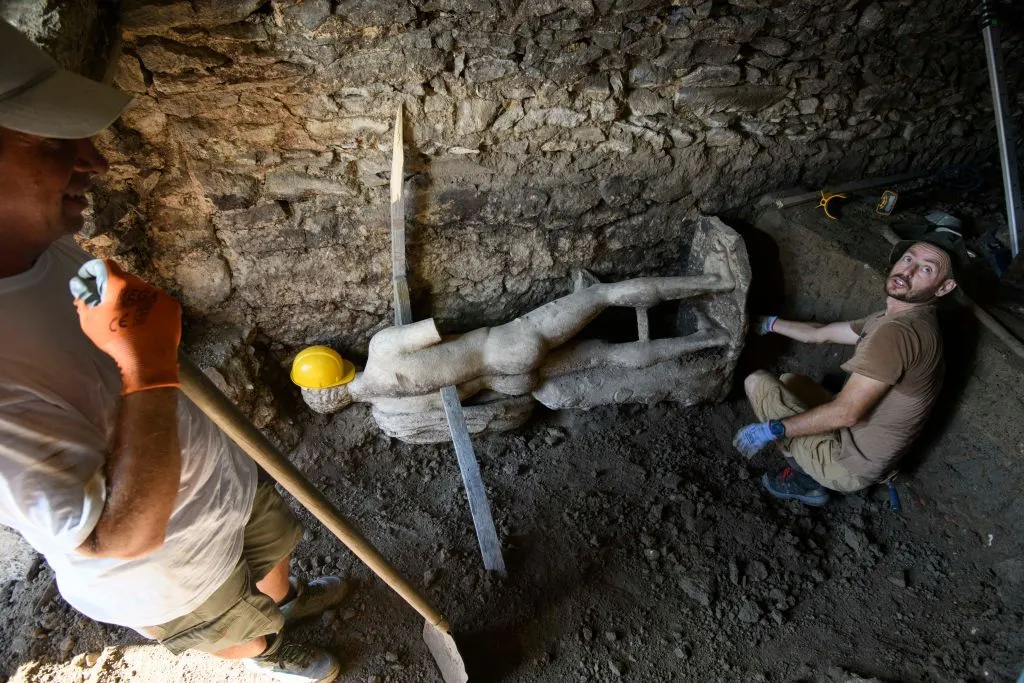Archaeologists in Bulgaria have made a remarkable discovery in the village of Rupite, uncovering a nearly 7-foot-tall marble statue of the Greek god Hermes within an ancient Roman sewer. The statue, remarkably well-preserved despite its age, was found during excavations at the historical site of Heraclea Sintica.
Founded by Philip II of Macedon between 356 BCE and 339 BCE, Heraclea Sintica thrived until it was devastated by an earthquake in 388 CE. The city’s decline followed swiftly, leading to its abandonment around 500 CE.
Hermes, revered in Ancient Greek mythology as the messenger of the gods, likely found his way into the sewer system around the time of the earthquake, archaeologists speculate. This discovery has raised questions about whether the statue’s placement was an effort to safeguard the ancient deity or symbolically reject pagan practices, which were waning in influence with the rise of Christianity.
According to Lyudmil Vagalinski, leading the excavation team from Bulgaria’s National Archaeological Museum, the statue is a Roman replica of a Greek original and is in excellent condition, with only minor fractures on the hands and a well-preserved head.
“In a period when pagan practices were suppressed and Christianity was on the rise, this find suggests a complex relationship with ancient beliefs,” Vagalinski noted. The discovery underscores efforts to preserve cultural heritage amid evolving religious landscapes in antiquity.
Feature Image: Archeologists work around an ancient statue discovered at the Heraclea Sintica archaeological site, near the city of Petrich, Bulgaria, in 2024.PHOTO DOBRIN KASHAVELOV/AFP VIA GETTY IMAGE





